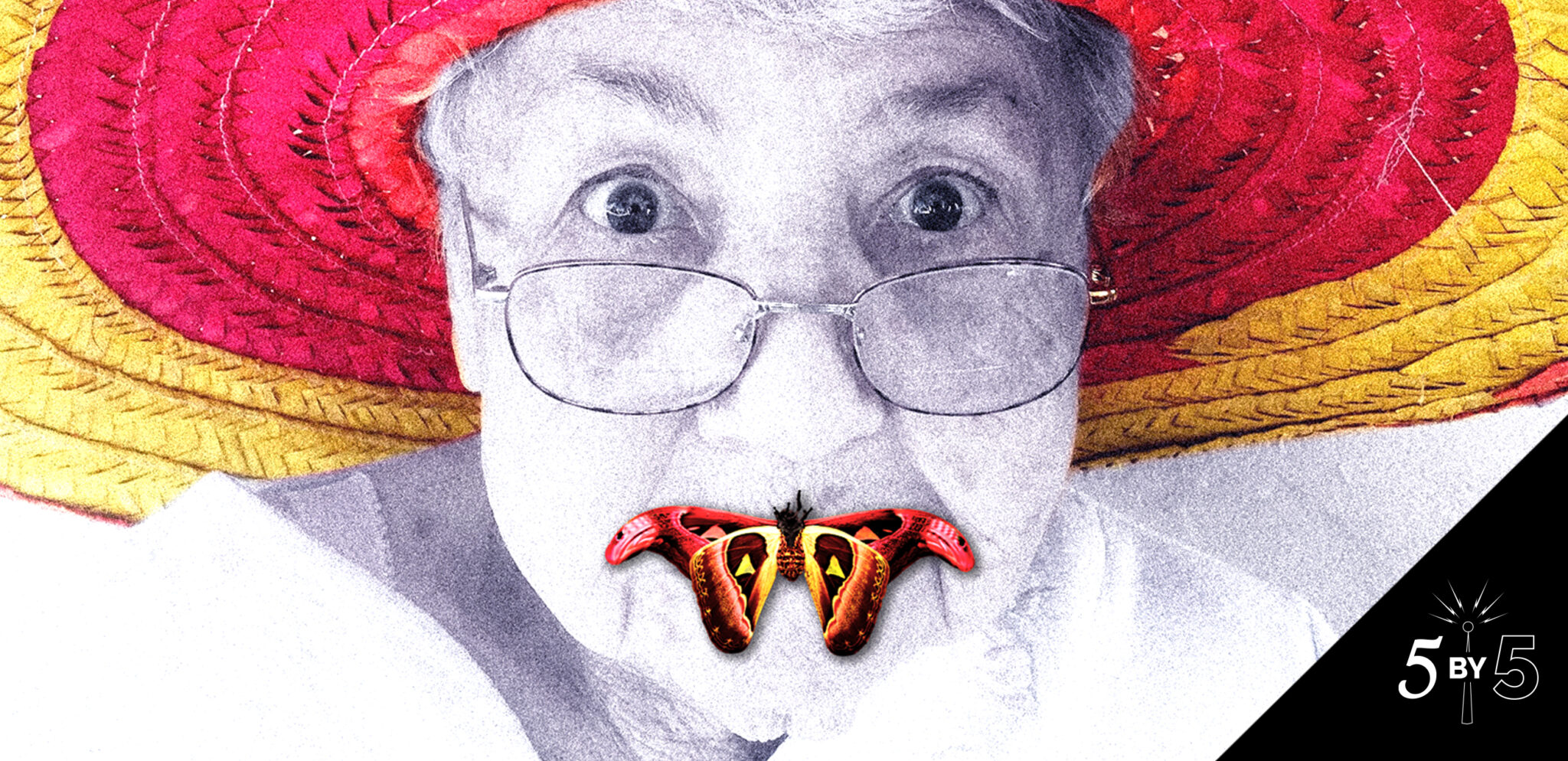
Grandma Ginny (“Nana”) was a red headed, four-foot-nothin’ Sicilian. I don’t have a lot of memories of her, but I do remember her as a presence. She hummed, my Nana. She was always humming. And if there’s one thing you can’t do when you’re in a bad mood, it’s hum. I never spent a single day with her that I didn’t hear her humming. She’d ride in the back seat of our car and read signs aloud. Street signs, construction signs, billboards… didn’t matter. She’d sound out the words like she was testing the flavor of them. When she read one that agreed with her, she’d throw out an “And, how!” Then go right back to humming.
Silence is Golden?
For millions of years, humming has been the equivalent of ‘contact calls’ between social animals. When they hear this hum, they know there’s no predator present. If there’s a threat, they stop making the call and stay motionless.
Silence, then, becomes their danger signal.
Humming is their signal that everything is okay. It’s also ours, in a way. It’s an expression of well-being and contentment. In fact, it’s likely where lullabies come from. We use the phrase “humming along” to describe something (or someone) working properly. A car, a printer… even a person working on a specific particular task.
While it’s true that organic social media alone can’t grow your brand, it’s still an essential component of your overall marketing strategy. Every week of silence is a missed opportunity to meet your customers and prospects where they are, to connect with them in any number of ways that drives them further along the path—to awareness, to trust, to consideration, or to purchase.
Make it Memorable or Don’t Make it at All
In 2020, the average consumer was served 5,000 branding messages a day. While silence is certainly not golden when it comes to brands’ social profiles, humming for the sake of making noise won’t help you stand out. If your social media profiles are “humming along,” your follower count and engagement rates should be slowly but steadily increasing.
Consistent brand voice, consistent presence, consistent messaging. These things matter. And that’s why organic social media matters. It’s your consistent channel to your target audience. How many of those 5,000 brand messages do you think stuck? How many do you think were so memorable that consumers remember the way they made them feel? Research from HBR found that there are 6 common emotions in highly shared content on social media:
- Admiration
- Amazement
- Astonishment
- Curiosity
- Interest
- Uncertainty
Here’s a great creative exercise to try next time you’re writing organic social post copy: Pick one emotion and write your social post copy with that in mind. Then try writing five more versions of the same post for each of the other five emotions.
Organic Social Media FAQs
When it comes to organic content, most brands we work with ask the same questions.
Q: How often do I need to publish organic posts?
A: Your publishing frequency and cadence will depend on the platform and total number of followers. But in general, here are some frequency guidelines to start with for each platform:
LinkedIn: 3-4 posts/week
Facebook: 3 posts/week
Twitter: 6-10 posts/week
Instagram: 4-5 posts/week
Q: How do I know when to boost an organic social post?
A: Facebook “boosted” post, Instagram “promoted” post, LinkedIn “sponsored” post… they all mean the same thing. Adding a paid media budget to an organic post allows you to reach a wider audience outside of your current followers and target specific people based on age, gender, location, occupation, and/or interests. Organic social posts that earn higher than average engagement rates tend to be strong contenders for boosting/promoting/sponsoring. But while boosting an organic post will extend its reach, in most cases, you’ll earn stronger results by creating a paid ad instead.
Organic posts aren’t typically written in the same way as paid posts, so they might lack a strong call to action and other elements of successful paid social media content. If Facebook or Instagram tells you that one of your posts is earning higher engagement and recommends adding a paid budget, consider duplicating the post and then editing the post copy, title, and CTA to better fit your intended audience and outcome.
Q: How can I increase engagements on organic social posts?
A. Before you begin actively working to increase your engagement, you’ll need a benchmark by which to measure your success. Average engagement rates tend to be pretty low. For Facebook, the benchmark is around 2%, according to social media expert Mari Smith. That’s because Facebook’s algorithm shows your organic posts to only about 16% of your followers.
Speaking of engagement rates, do you know how to calculate this?
- To find your Facebook or LinkedIn engagement rate, divide post interactions by total number of followers or by total number of post impressions.
- For Instagram, divide the total number of likes and comments by your follower count and multiply that number by 100.
Bonus: Post content that gets people talking and engaging, commenting, liking and sharing, and your post will take priority in the news feed.
Now that you know how to track engagement rate and what to aim for, here are a few ways you can encourage greater engagement with your organic posts:
- Ask a direct question.
- Request replies, shares, likes or comments.
- Create a poll that makes it easy for your audience to respond.
- Tag someone in the comments who you think might have an opinion or answer to your post.
- Share a compelling quote or stat
- Use Facebook and Instagram stories to run “this or that” polls for easy engagement.
- Share a relevant curated article and tag the author and/or source.
A Parting Thought
Your audience may not remember the exact words in your content, but they’ll remember how those words made them feel. And they’ll learn to connect that emotion to the brand sharing the messages (i.e. you). If you can do that consistently, you’ll turn that low hum into “and how” moments that resonate.
Grandma Ginny was authentic. She had a brand—hell, she was a brand. You knew who she was and exactly what you’d get from your interactions with her (“And how!”)! Can your brand say the same?
👉 Could you use a hand managing social media profiles, or benefit from experts behind the scenes to optimize your social content? You may be eligible for a free 30-day trial of our Optimate program. Click here to find out.


